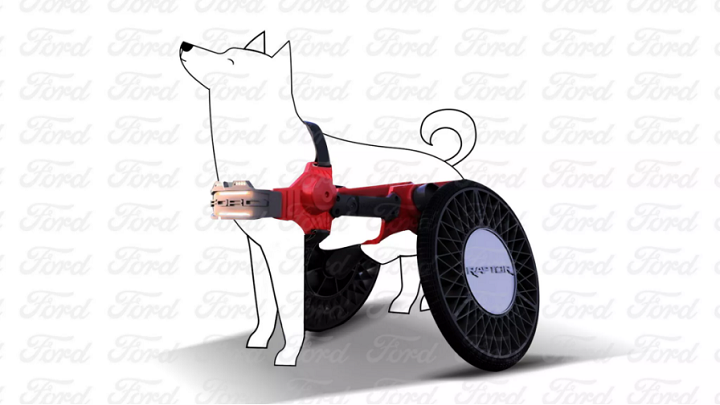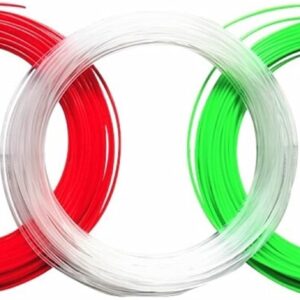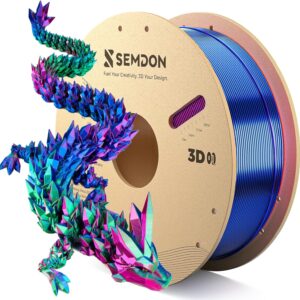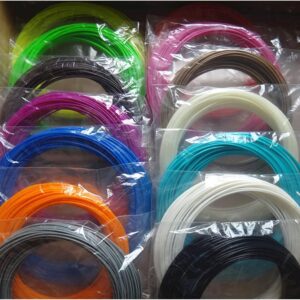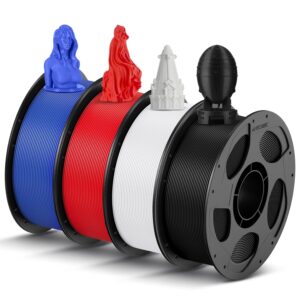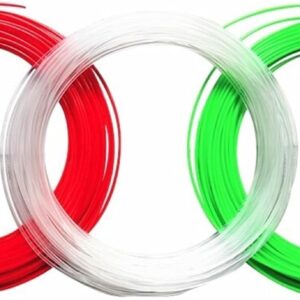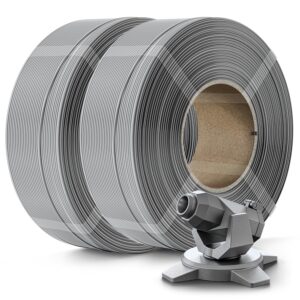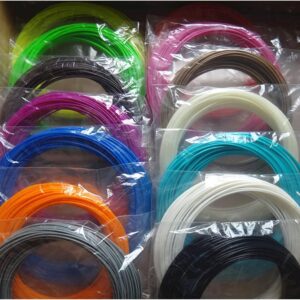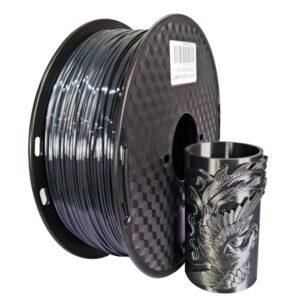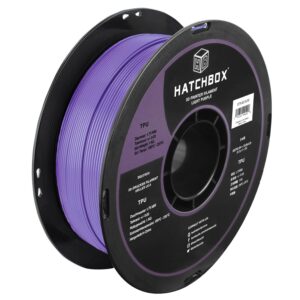In 3D Printing News Briefs today, Mingda launched a new high-temperature IDEX FDM 3D printer, while Wayland Additive offers new Mixed Reality service packages for the Calibur3. Collaborative researchers at the University of Sheffield and the University of Madison-Wisconsin developed a lightweight 3D printed electric motor. In medical news, Bioprotece and Fit 3D used an Eplus3D metal printer to make custom prostheses, and Ford of Mexico created a free 3D printable wheelchair for dogs!
Mingda Introduces High-Temperature IDEX MD-400D 3D Printer

The Mingda MD-400 with 3D printed automotive parts.
Industrial 3D printer manufacturer Mingda, based in Shenzhen, has launched its new high-temperature FDM 3D printer, the flexible MD-400D. The high-performance system features automatic bed leveling, silent air filtration, a substantial 400 x 400 x 400 mm free mode build volume, and independent double extruder (IDEX) technology. The latter allows the MD-400D to have four separate printing modes for improved productivity and versatility. First, Duplicate Mode can print two identical parts at the same time, while Mirror Mode enables 3D printed symmetrical models. Dual-Color Mode offers more artistic freedom, as it allows different parts of a model to be printed in two different colors. Support Mode can easily print highly precise, complex structural models, allowing both the regular high-performance material and the breakaway supports to be extruded separately—ensuring an easy support removal process and a clean, smooth finish.
High-temperature hot ends, capable of heating up to 350℃, are compatible with a range of engineering-grade materials, such as Nylon carbon fiber, PET-glass fiber, ABS carbon fiber, Nylon glass fiber, and more. Plus, the MD-400D also prints with flexible filaments thanks to the dual-gear direct extruder. The printer can also accommodate common hot ends, which can reach up to 250℃ and support more conventional materials like ABS, PLA, TPU, and PETG. Additional features include a flexible PEI platform, fully enclosed metal chamber, and a 5″ touchscreen, with an easy-to-use user interface and support for SD, U disk, and Type-C 3D printing methods. All in all, the new MD-400D is a great addition to Mingda’s professional AM portfolio and would suit a variety of applications, including jigs and fixtures, research and education, medical and aerospace parts, and more. You can request a quote for the printer here.
Wayland Additive Offers Innovative MR Post-Sales Services
Metal AM company Wayland Additive announced new advanced package options for post-sale Calibur3 service contracts and collaboration, which use innovative Mixed Reality (MR) capabilities. RemoteSpark, a user-focused MR performance tool, will deliver these capabilities via its immersive, hands-free environment, with instant access to 2D and 3D holographic assets that offer support for training, task completion, and operational efficiency. MR blends the physical and digital worlds to give users the chance to interact in real and virtual environments at the same time, which means new applications are opened up across many manufacturing sectors for timely, cost-effective after sales service. For example, the RemoteSpark tool enables secure, low-bandwidth audio and video calls between customers and Wayland experts if assistance is needed with the Calibur3 and its NeuBeam technology.
“Collaboration with our customers is central to how we operate at Wayland and is fundamental to our success, but more importantly, that of our customers,” said Peter Hansford, CRO at Wayland Additive. “This mixed reality approach to our post sale service contracts helps us to deliver more for them. The sustainability angle is also an important one, in a world where we all need to be more aware of our carbon footprints, we can work with our clients in a meaningful way, in real time without jumping on a plane to help them resolve any issues. It’s faster, it’s way more efficient and it keeps those carbon miles way down. It just works and is a Win-Win-Win — for our customers, for Wayland and for the environment.”
Researchers Create 3D Printed Electric Motor Prototype
Researchers from the University of Sheffield and the University of Wisconsin-Madison (UW-Madison) collaborated to build a 3D printed electric motor prototype. The demand for electric motors is growing as we approach the next phase of transportation electrification, which will require more lightweight batteries and energy powerful motors. The prototype was made with a higher-percentage silicon electrical steel that reduces energy losses, which is a good first step towards electric motors that increase their power while using less material. The design is a circular object called a stator with prongs that have wires wrapped around them to create a magnetic field, and thanks to 3D printing, the prototype features prongs with an intricate design of thin geometric lines that reduce energy loss. Traditionally, electric motor stators are made using a lamination process and electrical steel alloy with only 3% silicon, which increases energy loss rates and lowers efficiency. The alloy the team used has 6.5% silicon, which reduces energy loss but doesn’t hold up through lamination. 3D printing came to the rescue again, as it uses less pressure and can quickly print delicate patterns. UW-Madison researchers completed testing of the motor and found that its torque density had improved.
“This project has shown the large potential that additive manufacturing has for electrical machines, with lightweight, efficient structures that have never before been possible using any other manufacturing technique,” said Alexander Goodall, a doctoral student in Sheffield’s Department of Materials Science and Engineering who came up with the concept and designed, developed and manufactured the stator. “It was a pleasure to work with the team at WEMPEC (an internationally renowned power electronics research and electric machines research group located at UW-Madison) to turn this idea into a reality.”
Bioprotece and Fit 3D Use Eplus3D’s Newest Printer for Custom Prostheses
The EP-M260 metal 3D printer from Eplus3D has enabled Bioprotece and Fit3D to offer custom-made prostheses with intricate structures.
Moving on, medical device company Bioprotece and Fit 3D, a division of the IPMAGNA company dedicated to manufacturing implantable prostheses, are using a new metal 3D printer from Eplus3D to produce custom prostheses with intricate structures. Through a strategic partnership with Tecmahe, a renowned industrial solutions provider in Argentina, Eplus3D is partnering with the Argentinean prosthetics companies to improve their offerings. Together, the two purchased a dual-laser EP-M260 metal 3D printer, which has allowed them to advance their prostheses production methods.
The EP-M260, good for medium-sized parts and small batch production, features an optimized filtration system, gas flow management, real-time monitoring, continuous operation, and quantitative powder feeding and coating for less powder waste. Eplus3D uses rigorous laser beam quality control during metal powder melting to make sure the system meets precision requirements of Bioprotece and Fit 3D’s super trabecular prosthesis structure, which promotes bone regeneration and osseointegration. The EP-M260 has majorly improved their production capabilities, enabling them to print custom prostheses faster than competitors.
Ford of Mexico Engineers 3D Printable P-Raptor Dog Wheelchair
The Ford Motor Company seems to have a soft spot for animals, filing several patents for pet products like an integrated bowl with water level sensing technology and an accessible scooter. In 2022, the automaker used 3D printing for the FITS system in its Maverick truck, and now engineers at its Mexican arm have developed a free 3D printed solution for dogs with mobility issues: the P-Raptor wheelchair. Just like the Ford F-150 Raptor truck, the P-Raptor was designed with large wheels—to help dogs easily cover any terrain—and also features headlights, a grille, and a blue oval badge in the front. It can have electric motors installed in the wheels to make things easier on the dog, and the wheels can be placed at the front or the rear. The modular 3D printable wheelchair can even accommodate dogs that still have their limbs but can’t support their own weight anymore. Finally, the P-Raptor has an adjustable harness so it fits multiple dog body shapes; all you have to do is enter your pet’s dimensions into the website when you get the design file. The P-Raptor wheelchair will be free to download soon, and is easy to print and assemble.
In a Google-translated quote, Santiago Muleir, Product Development Engineer for Ford of Mexico, said, “The objective of using 3D printing technology is that a greater number of people and associations can have access to P-Raptor, taking into account that this type of printing has become more popular in recent years and the costs have gone down, making it a more accessible product.”
